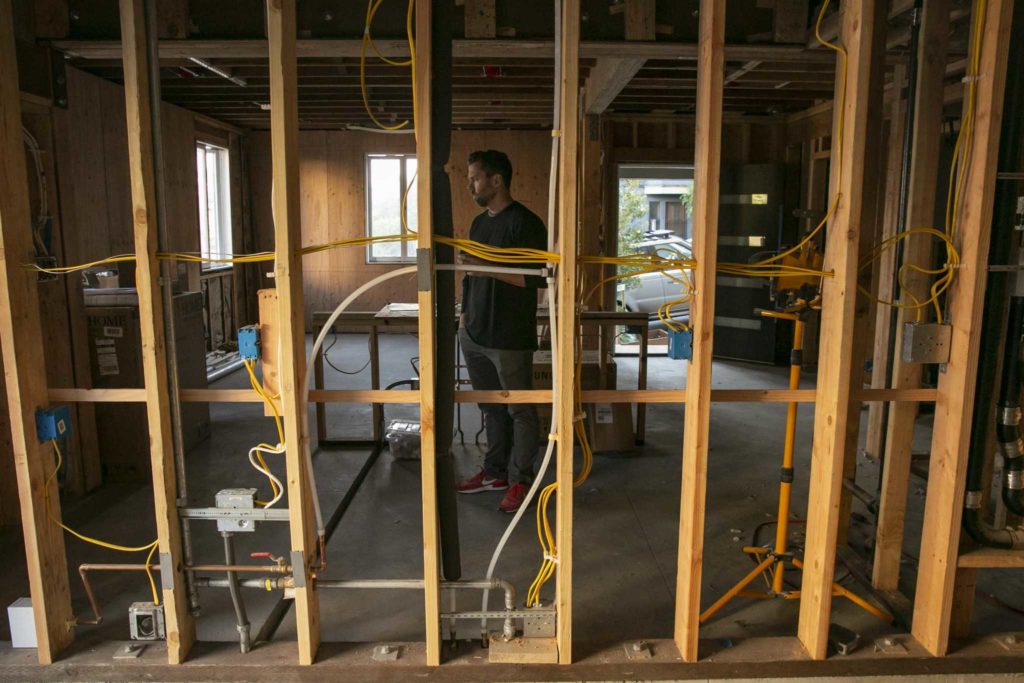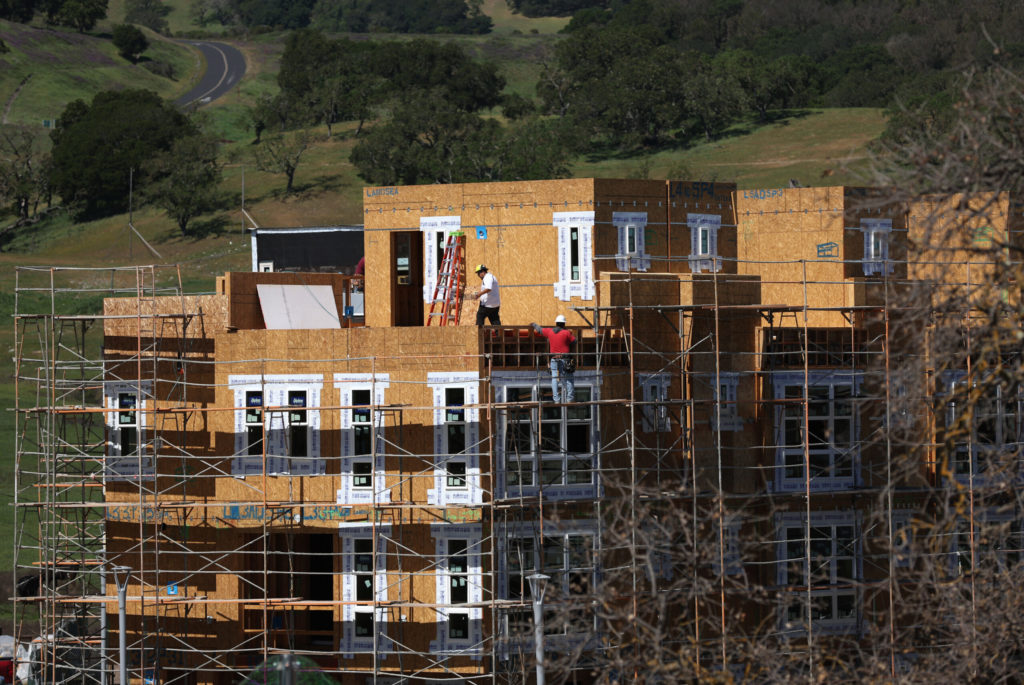On Tuesday, January 31, 2023 the deadline came and went for Bay Area cities to adopt a Housing Element compliant with State Law. There are consequences for cities that did not meet this deadline, and the risks will increase until this planning process is completed as required.
You may have read in the news recently about Builder’s Remedy, the most talked-about consequence of missing the Housing Element deadline. Proposed Builder’s Remedy projects that are exempt from local zoning constraints – and generally larger and taller than what would have been allowed – have already been submitted in Los Altos Hills (3 developments) and Mountain View (2 developments), as well as in cities in Southern California and across the state. It is clear that cities are losing some of their control, but it is a little less clear how the Builder’s Remedy actually works, and what else is at stake for non-compliant cities.

It is important to acknowledge that the “Builders’ Remedy” is only one of the consequences imposed by the state on Cities that did not meet last month’s deadline to adopt a compliant Housing Element. Cities could also lose access to important sources of state funding, and be subject to fines and legal action. No jurisdiction in Santa Clara County has adopted a Housing Element that has been deemed compliant with state law by the California Department of Housing and Community Development (HCD). In fact, as of today, just four of 109 Bay Area jurisdictions are in compliance with the January 31 deadline: Alameda, Emeryville, San Francisco and San Leandro.
Despite the consequences, this is what we expected to see based on our meetings with city staff and the draft housing elements that have been produced to date. Many local jurisdictions submitted drafts to the state over the summer and fall of 2022 and received extensive comment letters from HCD noting deficiencies that would have to be addressed before the plans could be approved. Others did not submit drafts in time to get feedback before the deadline and will still face a lot of work when they receive their HCD review letters. Some jurisdictions are working hard to respond (while others not so much), but even in the best case scenario we expect most jurisdictions to face months of revisions, elevating the risk of penalties. This has also been the experience in Southern California, where compliant plans were due in October 2021, and more than 40 percent of the jurisdictions have yet to produce Housing Elements certified by the state. Stay on top of what’s happening in your jurisdiction by visiting SV@Home’s Housing Element Toolkit.
So what are local jurisdictions doing, and what exactly are the possible penalties for non-compliance?
Late Submission
The majority of jurisdictions in Santa Clara County have opted to let the deadline pass and continue to work on completing Housing Elements with the expectation that they will be able to work through the shortcomings in coordination with the state. They will try to submit completed, compliant plans in the coming months to avoid the excruciating cycles of inadequate submissions, more review, and further revision that have dogged cities in other parts of the state.
Housing Element “Self-Certification”
Over the past two weeks, the City or Town Councils in seven Santa Clara County jurisdictions adopted their Housing Elements without assurance from the state that the drafts would be considered compliant. These so-called “self-certification” resolutions are a legal strategy to try to avoid penalties for housing element noncompliance. The resolutions may provide short term protection but do not absolve cities of the compliance requirements of state Housing Element Law. Housing Elements with adopted resolutions must still be submitted to HCD, which will determine if they are substantially compliant over the course of a 60-day review period. HCD will then either certify the adopted Housing Element as substantially compliant or will outline revisions necessary to comply with state law.
In other parts of the state, most cities that have taken the step of “self-certification” have still received further non-compliance comments from state authorities. Jurisdictions in our area are likely to have the same experience. Until the state has certified housing elements, these jurisdictions are out of compliance and are vulnerable to penalties.
Consequences of not having a certified Housing Element
Builder’s Remedy
In a case where a city has not adopted a Housing Element in compliance with state law, developers can propose housing projects that do not comply with zoning or the general plan. This “Builder’s Remedy” is part of the Housing Accountability Act and requires cities to approve an eligible housing development project, with few exceptions. Since no city in Santa Clara County has a compliant Housing Element, the Builder’s Remedy became effective for all local jurisdictions on February 1, 2023. HCD has clarified that there is no grace period for exposure to the Builder’s Remedy for cities. The Builder’s Remedy is largely untested until this planning cycle, but developers in our area appear to be interested in submitting Builder’s Remedy applications. Legal challenges, potentially from both developers and cities, are expected to follow suit.
The language overriding local zoning control for cities without compliant housing elements dates back to 1990, the early days of the state’s Housing Accountability Act, and has become more relevant now because of new laws strengthening the State’s oversight of housing elements. Developments qualify for the Builder’s Remedy if at least 20 percent of their units are deed-restricted for low-income residents, or if the developer dedicates the entire development to moderate-income residents. The only legal grounds for denial would be proof that the development would have a specific, adverse impact on public health or safety under standards that were in place before the project was submitted for approval; if denial is required to meet state or federal law; or in some cases where the project is proposed on land zoned for agriculture or resource preservation. The City of Huntington Beach recently attempted to pass an ordinance to preemptively prohibit all Builder’s Remedy applications on the grounds of “unspecified environmental or health concerns,” and received a sternly worded letter from the Attorney General’s office informing them that this would violate state law.

City of Redondo Beach
The Builder’s Remedy has already been used in a number of jurisdictions around the state. For example, the City of Santa Monica has been forced to approve 3,968 new housing units across 12 developments (which would never have been approved through the regular local process), since they were submitted between the time the City missed the Housing Element deadline and the date the Element was certified by HCD. In Redondo Beach, a 2,290-unit Builder’s Remedy project has been proposed on a parcel of beachfront real estate that has been occupied by the AES power plant.
The Bay Area has seen its first proposed Builder’s Remedy project in Los Altos Hills; the property owner has proposed a 20-unit multifamily development on a large parcel zoned for one single-family house. In each of these cases, Builder’s Remedy has allowed developers to propose projects with more housing units and more building height than the parcels’ zoning permits. In the Redondo Beach case, the parcel where the Builder’s Remedy project is proposed was not zoned for residential uses at all.
Developments proposed under the Builder’s Remedy must still go through the CEQA process of environmental review and study, unless they are exempt under other criteria.
Shortened Rezoning Deadline
Jurisdictions that fail to adopt a certified compliant Housing Element within 120 days of the deadline have a shortened deadline to implement all the rezoning in the Element: if Bay Area cities haven’t adopted a certified element by by May 31, 2023, they will have to complete their rezoning by January 31, 2024. Cities that adopt a certified Element before May 31st have 3 years to rezone.
This means both that jurisdictions must adopt the housing element and that the housing element must be found in compliance with Housing Element Law by HCD by May 31st. Jurisdictions that adopt more than one year from the statutory deadline cannot be found in substantial compliance with Housing Element Law until the local government has completed all required rezoning.
Loss of Access to State Funding
Cities with noncompliant Housing Elements will lose access to some funding programs for affordable housing, but even the handful of cities uninterested in affordable housing have a lot to lose for themselves and their residents. State funding programs for transportation and infrastructure also often require or consider a local jurisdiction’s compliance with Housing Element Law. These competitive funds can be used for fixing roads, adding bike lanes, and improving transit in local communities. In some cases, a jurisdiction can only access funding from state/federal housing programs if it has a compliant housing element.
For some other funding sources, a compliant housing element is not a requirement in order to apply; however, those applying for funding will receive extra points on their application if they do have a compliant housing element (increasing their chances in the competitive application process).
State funding programs – some larger and some smaller – that require a local jurisdiction’s housing element compliance include:
- Community Development Block Grant Program
- Infill Infrastructure Grant Program
- Local Housing Trust Fund Program
- Affordable Housing and Sustainable Communities Program
- Permanent Local Housing Allocation Program
- Caltrans Sustainable Communities Grant Program
Fines and Exposure to Legal Action
Noncompliant jurisdictions may also face enforcement actions from HCD or from the California Attorney General’s office. After six rounds of revisions with HCD and two more meetings with the Attorney General’s office to try to bring the jurisdiction into compliance before the AG takes legal action, a court may find a city’s Housing Element to be out of compliance. The court can then order the city to pay fines to the California state housing trust fund, attorney’s fees to the plaintiff, or both. The law defines an escalating structure of fines ranging from $10,000 to $100,000 per month. Continued failure to achieve a certified Housing Element allows the court to triple the fines after 3 months and increase the fines by a factor of six after 6 months.
It is hard to imagine cities would continue to willfully fail to follow the law, but in extreme cases, Housing Element law even allows a court to appoint an agent to act on the city’s behalf with all powers necessary to bring a city’s Housing Element into compliance with state law. After decades of cities across the state falling further and further behind on meeting our housing needs, the California Attorney General’s office has been very clear that it intends to use every tool at its disposal to ensure cities are following state housing law.
The State is committed to supporting local jurisdictions in the Housing Element process, and the Metropolitan Transportation Commission (MTC) is investing substantial resources at the regional level in ongoing technical assistance. SV@Home and our local and regional partners are also committed to supporting the process and getting across the finish line—we just need cities to follow the law! Stay on top of what’s happening in your jurisdiction by visiting SV@Home’s Housing Element Toolkit.

